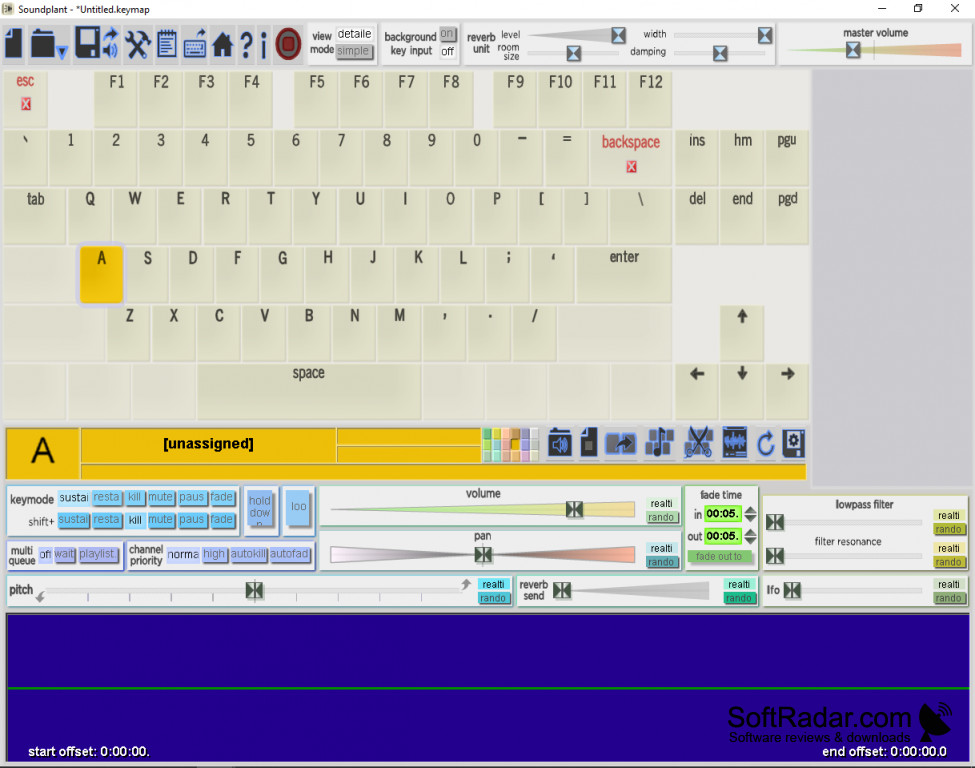

The rise and swell fluctuates, not entirely predictable. But then a higher pitch juts into the mix, and the strains of sound diverge, becoming faster-paced and a bit more like electronic dance music. If you change the Time Units setting, you make the sixteenth notes shorter.The music sounds, at first, like it belongs in a power yoga studio: electronic and rhythmic, rising and falling like breaths.
Soundplant Faster Time Playback Download Codes Printed
Data Garden produced digital albums, partially distributed via download codes printed on artwork that was embedded with plantable flower seeds, as well as installations and interactive exhibitions that combined plants, music and technology. Er, right?PlantWave grew out of a zero-waste record label called Data Garden, started by Joe Patitucci and Alex Tyson in 2011. The plants can speak "ambient chill," it turns out. Relatedly, there's been a surge in " plantfluencers," social media stars at the intersection of horticulture, wellness and Instagram, curating photos of minimalist jungles in well-lit living rooms.Now, through bio-sonification devices like Music of the Plants and PlantWave, plant enthusiasts can open channels of communication with their plants, conducted in the trending language of ambient noise. By one report, sales surged almost 50%, to $1.7 billion, between 20. The indoor houseplant market is booming, especially among millennials.
But Plantwave's primary mission with plant music is to foster an awareness of plants as living organisms. YouTubeThe resulting plant music can be used in a variety of ways – musicians can mix it into their songs, yoga studios can put it on in the background of shavasana, art galleries can play it as installations. After that, Patitucci and Tyson wanted to create a commercially available version for musicians and plant lovers the first iteration sold out, and a new and improved model, funded by a successful Kickstarter campaign, will be released in the near future.Hear a bit of beach-based plantaphonia above. The result was "Data Garden Quartet," featuring four harmonizing plants that played continuous music. Data Garden worked with an engineer, Sam Cusumano, to develop a device that translated micro-conductivity on the surface of plants into a graph that could be used to control hardware and software synthesizers.
The consumer version of the invention includes sensors that issue small signals through the plant, measuring variations in electrical resistance between two points within it. "Plants don't sound like flutes," Shapiro says. "It does allow people, and it has allowed me, to look at other life forms and appreciate their aliveness in a different way."But their aliveness isn't necessarily human, so saying that plants "play instruments" is more a figure of speech.
And even so the sound will vary a lot, and not simply based on the species of plant. Some are too small or delicate to measure, and a large tree might only bring about a few notes — so it's ideal for the (millennial-preferred) healthy, glossy houseplant. A symphony (of sorts), generated by algorithms and leaves.Like people, not all plants are naturals. "Then we graphed that change as a wave, and then we translate that wave into pitch, so then essentially we're getting a stream of all these pitch messages coming from the plant." The pitches then enter the device's software, which features different electronic instruments — the flute, harp, piano, guitar, bass and some synthesizers among them — that you can elect for the plants to "play," then scaling them to be harmonious.
Frank Telewski, a plant biologist at Michigan State University, notes that plants make sounds related to plants make sounds related to external factors like wind, and also to "the cavitation in the hydraulic pathway resulting from tiny bubbles forming in the xylem. Though plants do make sounds — but not to communicate with us.The sounds they make are responses to things in their environment or their internal workings-stuff moving around and processing inside of them. The sounds are human-generated, even if they're responding to internal changes in the plant.
"I texted my roommate, 'how are the plants doing?' And he said, 'Oh they're doing great, really healthy' and I asked, 'Could you send me a photo?' And all the plants were really happy except that one plant, a peace lily, which needs a lot more water, and its leaves were drooping. A few days later he checked in again and the same thing was happening. From a distance, he tuned in to listen to them—and one of them was playing the same note over and over. When Patitucci was traveling in Thailand, he asked his roommate to water his plants. "It's really important to understand that these are beings that are living in another dimension." This is a paradox of sorts about plant music: the imposition of a human scale and pitch allows us to be more aware that plants are living, but it might make us think they feel like us, even when they don't.Still, as with a rumbling stomach, human-generated plant music can tell you something. "I think that a lot of times when people think of plant music, when they first hear of it, they think, will it sound like death metal in this case or classical music in this other case? Will it tell you if it's mad at you or sad?" he said.


 0 kommentar(er)
0 kommentar(er)
